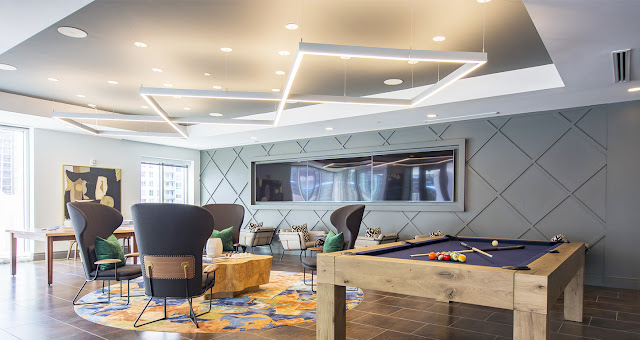Understand what LED Downlights are?
Incandescent lights are not only responsible for wasting money from your pocket, but also they reduce the level of productivity. But dimmable LED recessed downlights do not consume more energy and also do not occupy more space. So, if you are looking to enhance your office's view, you can install this LED Downlight and enjoy the ambient lighting throughout. A downlight provides an ambiance to your space and renders the perfect lighting all through the homes or commercial areas where they are used. The high CRI makes this light suitable for all three lightings, i.e., accent, general, and task lighting.
Most suitable applications for installing downlights are kitchens, hallways, living areas, study areas, and commercial spaces. If the downlights have an IP44 rating, it could get installed in the areas near water. For instance, the indoors can be installed in the bathroom, shower rooms, and the outdoors can be installed near the swimming pool. These lights are installed on the ceiling height, which is much lower than the average ceiling height.
Downlights are enough, and you also have the option to blend them easily with other design schemes like pendants and spotlights.
LED Downlights are also known as can lights and pot lights. It's a directional lighting fixture that projects the intense beam of light in a downward direction.
There are numerous types of LED recessed downlights available in the market, so you are free to choose any as per your requirement. Let's have a look at the factors that need to be considered before you buy LED downlights.
There are a few things which are essential to keep in mind:
Does the high wattage mean high lumens?
No! High wattage never means high lumens. Lumen output never varies linearly with the wattage. Lumens is to measure the brightness. If two bulbs are of the same wattage, it does not mean that its lumen output will be the same. It can produce various lumen outputs. All of us are aware that LEDs consume less energy compared to fluorescent. For example, a downlight of 12-watt can replace the fluorescent bulb of 24 watts, but both give the same lumen output.
So, whenever you purchase LED downlights, instead of wattage, look for the lumens.
Colour should be in mind:
Suppose you don't have any idea of the colour scheme in your mind related to lighting, then no need to worry as the LED downlights are available in various colour temperatures. So you can align the colour with the colour pallet of your space where you will have to install the light.
How to use?
As per the usage, you can consider the different beam angled downlights. If you want to use the downlights like accent lighting, then a downlight that emits a narrow beam can be considered. For task lighting, downlights of wide beam angles can be considered to complete the task correctly in the kitchen, office, or study areas. LED recessed lighting fixtures are used to highlight the specific object.
Understanding of the colour temperature:
Kelvin is the unit of the colour temperature. Colour temperature is of two types, i.e., warm and cool. If the colour temperature is above 4000K, it is cool white light, and if it is below 4000K, it is known as warm white. It plays a pivotal role if we talk about productivity. The level of the focus gets improvised with the cool white light. Warm white light provides cooling and relaxation to the eyes.
Dimmer Requirements:
Most of the lighting is having inbuilt dimmers, which optimizes these lights' energy effectiveness and ambiance. There are many dimmable lights available. You can view all of our products by visiting our website LEDMyplace.
This blog will help you understand each factor to be considered before purchasing the LED Downlights. If you have any queries or questions related to LEDs, then please e-mail us at info@ledmyplace.com. We will revert and will love to write a blog based on your query.




china Smart mirror manufacturer
ReplyDeleteThank you so much for sharing this blog. high cri downlights wholesale
ReplyDelete